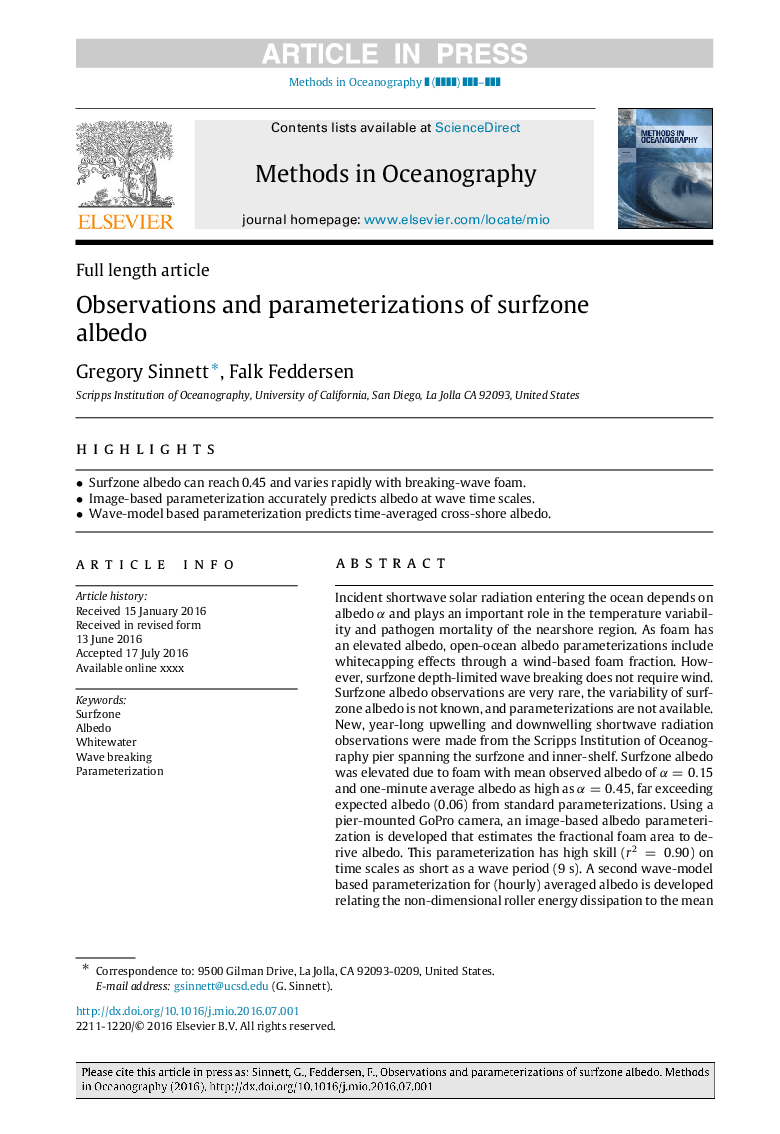| Article ID | Journal | Published Year | Pages | File Type |
|---|---|---|---|---|
| 8060425 | Methods in Oceanography | 2016 | 16 Pages |
Abstract
Incident shortwave solar radiation entering the ocean depends on albedo α and plays an important role in the temperature variability and pathogen mortality of the nearshore region. As foam has an elevated albedo, open-ocean albedo parameterizations include whitecapping effects through a wind-based foam fraction. However, surfzone depth-limited wave breaking does not require wind. Surfzone albedo observations are very rare, the variability of surfzone albedo is not known, and parameterizations are not available. New, year-long upwelling and downwelling shortwave radiation observations were made from the Scripps Institution of Oceanography pier spanning the surfzone and inner-shelf. Surfzone albedo was elevated due to foam with mean observed albedo of α=0.15 and one-minute average albedo as high as α=0.45, far exceeding expected albedo (0.06) from standard parameterizations. Using a pier-mounted GoPro camera, an image-based albedo parameterization is developed that estimates the fractional foam area to derive albedo. This parameterization has high skill (r2=0.90) on time scales as short as a wave period (9 s). A second wave-model based parameterization for (hourly) averaged albedo is developed relating the non-dimensional roller energy dissipation to the mean foam fraction and thus albedo. The parameterization has good skill (r2=0.68) and resolves cross-shore albedo variations. These new parameterizations can be used where imagery is available or wave models are applicable, and can be used to constrain local heat budgets and pathogen mortality.
Related Topics
Physical Sciences and Engineering
Earth and Planetary Sciences
Oceanography
Authors
Gregory Sinnett, Falk Feddersen,
